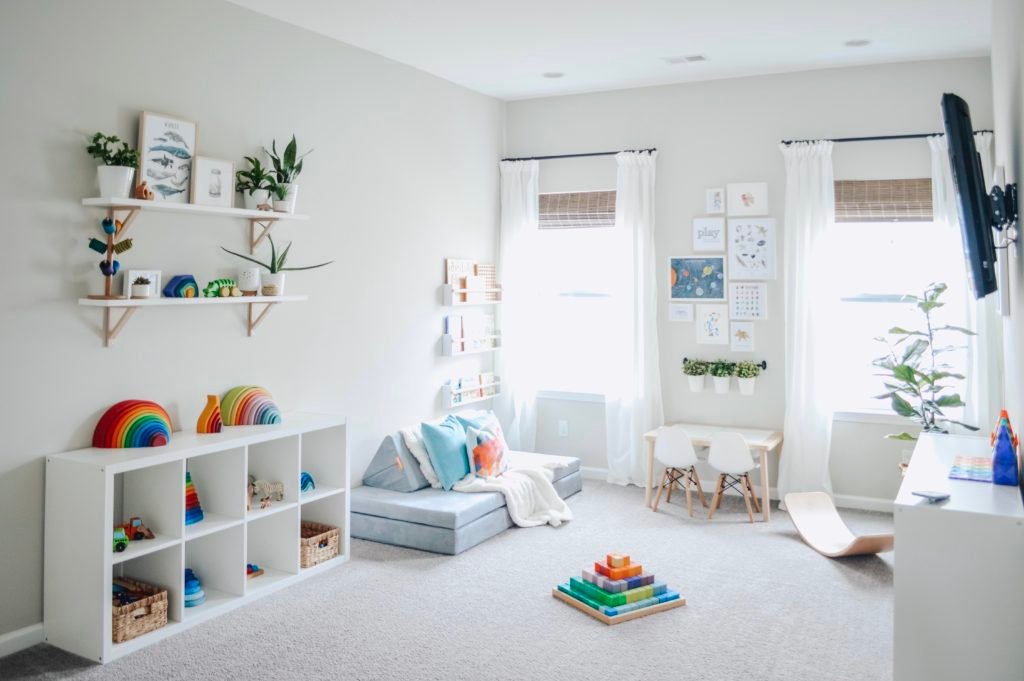Creating a play space that caters to multiple children can feel like a daunting task. It needs to be fun, safe, and stimulating, while also encouraging creativity and collaboration. Whether you have siblings sharing the space or friends frequently visiting, designing a well-thought-out play area ensures every child has something to enjoy. Here’s a guide to help you craft the ultimate shared play space.
1. Plan the Layout for Multiple Users
Define Activity Zones
Divide the room into different zones based on activities:
- Creative Zone: For arts, crafts, and imaginative play.
- Quiet Zone: For reading and relaxation.
- Active Zone: For games and physical play.
Having designated areas reduces clutter and keeps children focused.
Provide Personal Space
Include individual storage bins or shelves for each child to store their favorite toys and belongings. This fosters a sense of ownership and minimizes conflicts over shared items.
Ensure Open Space
Leave enough open floor space for free play, group games, or building activities. A large, cushioned rug can define this area and provide a soft surface for play.
2. Choose Durable and Versatile Furniture
Opt for Multi-Functional Furniture
- Storage Benches: Double as seating and toy storage.
- Foldable Tables: Perfect for crafts and easy to store.
- Stackable Chairs: Save space while accommodating multiple children.
Pick Kid-Friendly Materials
Use furniture with rounded edges and non-toxic finishes to prioritize safety. Look for sturdy, easy-to-clean surfaces to withstand spills and wear.

3. Organize for Efficiency and Fun
Label Storage Bins
Use labels or pictures to identify where each type of toy belongs. This helps children clean up independently and keeps the space organized.
Rotate Toys
To keep the play space exciting, rotate toys and activities periodically. This gives children something new to explore without overcrowding the room.
Incorporate Vertical Storage
Maximize space by adding wall-mounted shelves or hanging organizers. Use them to store items like books, puzzles, or lightweight toys.
4. Promote Collaboration and Creativity
Interactive Play Areas
Add features like a play kitchen, train table, or building blocks that encourage group play. These activities help children learn to share and collaborate.
Art and Craft Station
Stock a shared craft table with crayons, markers, paper, and other supplies. Use caddies or bins to keep materials tidy and accessible.
Imaginative Play Zones
Include costumes, puppets, or themed playsets to spark pretend play. A tent or small stage can turn into a magical setting for endless adventures.
5. Prioritize Safety
Soft Flooring
Install padded mats, rugs, or foam tiles to cushion falls and make the space more comfortable for crawling or sitting.
Secure Furniture
Anchor heavy furniture, like bookshelves and cabinets, to the wall to prevent tipping.
Use Non-Toxic Materials
Ensure all toys, paints, and furniture finishes are child-safe and free from harmful chemicals.
Keep Hazardous Items Out of Reach
Store small toys, art supplies, or other potentially unsafe items on higher shelves or in locked cabinets.
6. Add Personal Touches
Personalized Decor
Incorporate each child’s favorite colors, characters, or themes into the room’s design. This helps everyone feel included and excited to play.
Display Their Work
Create a gallery wall to showcase their artwork or crafts. This builds pride and encourages creativity.
Interactive Walls
Add chalkboards, whiteboards, or magnetic boards for kids to draw and write on. These features add versatility to the play space.
7. Encourage Independence
Design the play area so children can navigate it independently:
- Use open shelves and low storage to make toys accessible.
- Provide child-sized furniture for comfort and ease.
- Hang hooks or racks at their level for coats, dress-up clothes, or backpacks.
8. Make It Adaptable for All Ages
If the play space will be used by children of varying ages, consider:
- Baby-Safe Areas: For infants and toddlers, include a gated section with soft toys and age-appropriate activities.
- Challenging Activities: For older children, provide puzzles, board games, or STEM kits to keep them engaged.
Final Thoughts
Designing a play space for multiple children requires creativity and thoughtful planning. By combining organization, safety, and fun, you can create an inviting environment that caters to all ages and interests. With the right setup, your play space will become the ultimate hub for learning, laughter, and lasting memories.










